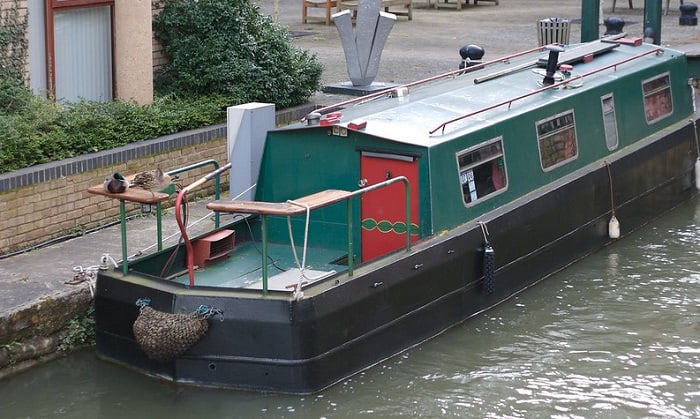Freight shipping is difficult, but a more convenient option called barge is available to save the day! What is a barge boat, anyway? A barge boat is a vessel made for transporting goods and passengers through canals or rivers. What does a barge look like? It’s long, has a flat bottom but no self-propelling mechanism. Hence, it needs to be pulled by a tug or towboat.
A barge can carry bulky cargo and heavy loads better than a freight. With this awesome capability, people even transport oil, soil, and sand through barges. To know more about barges, spare some time to read this whole article.
Table of Contents
Uses of a Barge
Despite the definition of a barge boat above, you need to know the specifics. What is a barge used for? What is being transported by the barge?
- Cargo and heavy loads
The usual barge size in the US is 195 ft by 35 ft, and it can carry loads up to 1,500 tons. But you can find barges that are 209 ft by 50 ft too. You may wonder why barge boating would be the choice for transporting cargo and heavy loads since there are other advancements in the logistics industry.
Well, many prefer barges because of their affordable price. You can save 95% when using a barge instead of a truck and rail cargo costs double the rates of barges.
Even though barges are economical, they’re efficient in transporting goods. Many of them are designed for a specific body of water, so they can only travel within the waterway that they’re made for. But their ability to tow and tug high volumes of cargo is unrivaled.
- Accommodating passengers
The original structure of a cargo barge has gone through renovations to become a passenger barge and stationary houseboat. You will find them in various representations. I was surprised to see one that is like a hotel, carrying a dozen people. There are amenities like Wi-Fi, a bathroom, a comfy bar, and a dining salon. Some barges even serve as saunas or hot tubs.
There are barge cruises where you can load your bike and go out to explore during a stopover. However, don’t compare these customized barges to river cruisers. The latter is long and narrow so they can go through river locks.
How Can You Distinguish a Barge From a Ship?
Bear in mind that barges can turn into ships but not all ships can be transformed into barges. Hence, a river barge can be a ship barge from a logical point of view. To tell these vessels apart, here are the differences between barge vs ship.
- Definition
A ship is a large craft while the supply barge definition is a ship with a flat bottom that transports cargo through inland waterways.
- Route
The scope of the barges’ route is only inland waterways like canals, creeks, estuaries, and rivers, while ships cross both inland waterways and international waterways.
- System
Ships have a self-propelling system that is not found in barges. A tug or towboat makes a barge work so it’s slower than a ship.
- Control and maneuvering
Since there’s a self-propeller system in ships, it’s easier to control and maneuver. On the other hand, more effort is necessary to tug and maneuver barges.
Different Kinds of Barges
Barges were used even before the Industrial Revolution that occurred in Europe. They carry cargo through places that are linked by small bodies of water. There was a decline in barge utilization when trains and steam engines emerged. Nonetheless, barges were able to return to the mainstream. You can find different kinds of barges:
- Dry bulk cargo – This is utilized for dry cargo, which can be sand, food grains, and minerals like coal and steel.
- Barracks – This is also called a houseboat. It’s common in Australia, Canada, and Asian countries like Cambodia, Laos, and India. It’s amazing to see a stationed barracks barge floating in rivers and lakes. This serves as a residence for some people.
- Carrying liquid cargo – It carries liquid cargo like liquid forms of fertilizer, petrochemicals, and industrial liquid chemicals.
- Split hopper – It’s a unique barge since it transports dredged material along with appropriate unloading tools. The primary role of this barge is to help marine construction sites. Its hull can split into two thanks to its cylinder unit. Unlike other barges, it has a self-propeller system and a hydraulic motor.
- Car-float – This is a barge transport for rail carts in the early twentieth century. The carts are connected to this type of barge to be delivered to another place. Furthermore, they’re like rail-sets utilized in the US until today.
- Power barge – It’s a power plant that is moveable.
- Royal barge – You can’t always see this barge as it’s used as a platform for royal events. As monarchy is practiced in the UK, this vessel is used in the country.
Sizes and Capacities of Barges
Besides different types, you have to know several barge sizes and capacities. These things are set to meet transportation requirements, including the overall length, load carrying capacity.
| Size of barge | 180 ft | 230 ft | 270 ft | 300 ft |
| Total length of the sideboard | 180 ft | 230 ft | 270 ft | 300 ft |
| Breadth | 50 ft | n/a | 72 ft | 90 ft |
| Ramp door width | 5 m | n/a | n/a | n/a |
- 180-foot barge
It’s the least preferred barge as it has a relatively low carrying capacity of 2,000 metric tons. Moreover, the deadweight is 1,500 tons with 5 tons for every deck meter.
- 230-foot barge
It’s considered a small to medium barge with a capacity of 4,000 metric tons.
- 270-foot barge
This is a medium barge because it can carry 6,000 metric tons. Its deck can accommodate 7 tons per square meter. According to Smith Bracket, it has a gross tonnage value of almost 2,387.
- 300-foot barge
Since it has the highest carrying capacity, it’s the most preferred barge. With a capacity of 8,000 metric tons, transporting large and heavy loads is possible. Its deadweight is 9,700 tons while its deck load is 25 tons per square meter.
Final Load on a Barge Boat!
What is a barge boat? It’s a vessel with a flat bottom. You can consider it a ship but its slow movement is noticeable. Despite this downside, people depend on it for transporting various goods, materials, and products. There are other options in the logistics industry but barges as transport vessels are more affordable. They Still get the job done, so there’s nothing you can complain about them.
Related: Everything you should know about other types of boats:

Ten years of enjoying countless trips on boats never made me love them any less! So I am here to put all those experiences into good use for other boaters who want to have a safe and fun trip with their friends and families.



